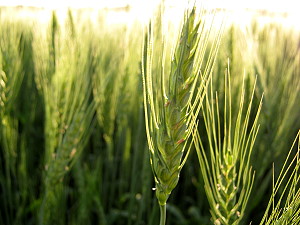 Crop Report Prepared by: Manitoba Agriculture, Food and Rural Initiatives GO Teams & Crops Knowledge Centre August 22, 2011 |
Crop Report Prepared by: Manitoba Agriculture, Food and Rural Initiatives GO Teams & Crops Knowledge Centre August 22, 2011 |
Northwest Region
In the Northwest Region, cooler night temperatures, some high winds, and general rains from 20 to 55 mm of rain occurred early in the week. Thunderstorms resulted in heavy precipitation in some areas. Local reports indicate amounts ranged from 100 mm south of Ochre River and Grandview to amounts as high as 200 mm north of Inglis where heavy hail caused high crop losses.
Winter wheat harvest is complete with average yields, some in part due to early season wet areas reducing overall field averages. Quality of winter wheat was very good with the exception of the later harvest which was impacted by some bleaching from the previous week’s rains. The perennial rye grass seed harvest is also reaching completion with average to above yields.
Crop growth is generally good with 75 to 85% of the wheat acres into dough stages and 15 to 25% ripening. Desiccation of spring wheat is underway.
Some lodging of heavy cereal crop stands through Swan River and Roblin is reported. Canola is 10 to 30% swathed. Flax, hemp, buckwheat and soybeans are developing well under the good growing conditions. As crops mature, drown outs, disease and root development issues are becoming more apparent in crop stands.
In the eastern areas of the region which experienced seeding delays due to early season excess moisture, there is below average yield expectation and variability in crop development and staging. In all areas, soil moisture levels are rated as very good due to the recent precipitation. Field activities on unseeded acres continue.
While some silage corn shows stand variability, rapid growth is occurring in response to higher temperatures and moisture. Second cut of forages is nearing completion with good yields and quality. Newly seeded forage grass seed and greenfeed crops are also responding favourably.
Seasonal pasture conditions have benefited with the rains. The native hay harvest is continuing with average or above yields. Some previously unharvested stands are being harvested; however, old undergrowth is lowering quality. Flood impacted low lying or poorly drained native forage and pasture lands adjacent to Lake’s Manitoba, Winnipegosis and Dauphin are continuing to dry where water levels have receded. On these lands, forage productivity remains very poor and is negatively impacted with invasion of non-forage plants.
